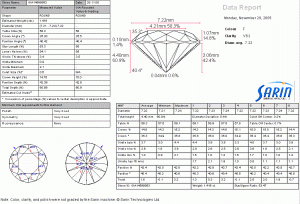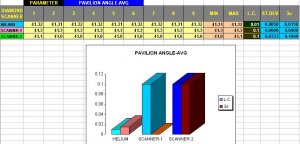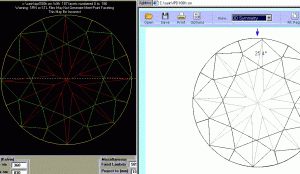adamasgem
Brilliant_Rock
- Joined
- May 23, 2003
- Messages
- 1,338
First, I don''t own either Helium, Sarin or OGI, but from the data I have seen, and recomendations, I would probably buy a HeliumDate: 11/27/2005 4:15:24 PM
Author: valeria101
Date: 11/27/2005 3:52:31 PM
Author: adamasgem
First they average and then they round.. ,
[...]
But what do you expect when the object was to make most stones VG to EX cut on paper.., hence they sell more paper and get more $$$$$..
This is a bit of rhetorical Q... mosty because I am somewhat lost in details.
Is the respective averaging & rounding mostly to blame for the overly lax grading? Or is it more in the scores associated with those measurements?
In other words, can those numbers be interpreted to obtain a more realistic ''top quality'' cut off or that can only be gotten with other measurements than GIA''s and they have extracted all information there is from the numbers reported.
It is interesting that the quantization level of the Helium data is one tenth (0.1) that of Sari or OGI.. Quantization level can make a machine appear much better than it actually is..the finer the quantization the better the device, as in scales..
I have seen repeatbility and machine to machine data, but since I did not take it, can''t attest to its'' accuracy.
I believe that there is a lot of fudging going on out there in various releases of software, and that GIA, kept it too too simple by averaging and then rounding again.. keeps their software data base much smaller. I Guess that it defines a "best" grade, but not the worst grade a particular stone could get, but then I guess that where you have to send it to the lab to get their objective opinion (be sure to enclose a check made out to cash, and you might get a better grade

I had been looking at Saring data on EightStars, and the Sarin MESH points, which define the facets, would suggest that there isn''t meet point faceting on probably the best cutting available.. WHICH says that the SARIN machine is seriously screwed up (but better than a leveridge guage), and it didn''t just happen on EightStar data.. so average, to make a stone appear symmetric when it isn''t, round up or down to the nearest 0.5 degree, and put out FARCEWARE(TM), and forget all about min max about the averages, etc, etc, etc..







300x240.png)